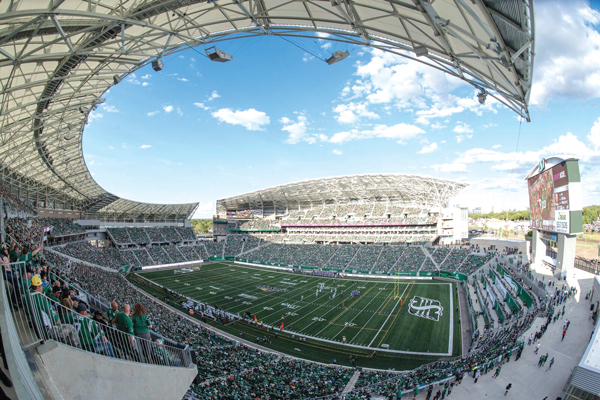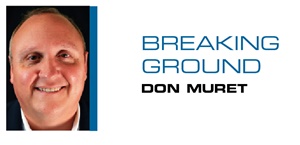The Saskatchewan Roughriders’ new stadium stands out for its financial model as well as for its European feel.
Mosaic Stadium, a $278 million (Canadian) project, includes the team’s $25 million investment toward construction. As part of its agreement with the province and the city of Regina, the Roughriders were required to pay their portion of funding well in advance of stadium completion.
 |
The Saskatchewan Roughriders’ Mosaic Stadium has a roof canopy .
Photo: SASKATCHEWAN ROUGHRIDERS |
In turn, the team went to market with a “cash upfront” proposition for naming rights and founding partners, said
Steve Mazurak, the Roughriders’ vice president of sales and partnerships, who played in the CFL for eight years and served as executive director of the CFL Players Association from 1981 to ’85. All told, the Roughriders signed 11 deals totaling more than $76 million, and they secured about 20 percent in cash, or roughly $15 million, two to three years before the stadium officially opened July 1, Mazurak said.
The model is unusual in sports, where sponsorship dollars typically start flowing after a facility opens, industry experts say, but there have been other cases. Ford Motor Co. pitched in upfront to help pay for Ford Field, home to the Ford family’s Detroit Lions, said Bill Rhoda, president of Legends Global Planning and a principal at CSL International, the Lions’ financial consultant.
In Saskatchewan, where Legends consulted with the Roughriders on the sales side, the 11 sponsors, including Molson Coors, SaskTel, AGT Foods and Mosaic, the fertilizer company that had its name on the team’s old stadium, recognized the new building as a community asset. Spreading that message during presentations made it more conducive for the team to ask for money upfront, Mazarek said.
Mosaic Stadium, which cost $215 million to build in today’s U.S. dollars, sits on the northwest edge of Regina, about a 20-minute walk from the city’s downtown district, Mazerak said. Gregg Sauter, the Roughriders’ vice president of business development and marketing, grew up near Green Bay and says the site is similar to the residential neighborhoods surrounding the Packers’ Lambeau Field.
The CFL stadium’s distinct feature is its European-style roof canopy, which covers half of the building’s 33,400 seats and protects fans from the harsh prairie winds of west-central Canada. Two corners of the roof structure were left open to accommodate structural columns should the Roughriders, the city and province decide someday to install a fixed roof, said Mark Williams, a principal with HKS, the stadium’s designer. The decision to go with a canopy saved money on construction costs and heating expenses, team officials said.
The stadium’s 38 suites and 78 loge boxes are sold out except for some single-game inventory, league commitments and future sponsor opportunities, Sauter said. The Roughriders sold 1,200 club seats as season tickets, leaving 200 remaining to sell for single games.
In addition, “Pil Country,” a 1,200-space standing-room section across five levels branded for MolsonCoors’ Old Style Pilsner, is a smaller version of the end zone decks at AT&T Stadium and U.S. Bank Stadium, two HKS projects, Williams said. Pil Country tickets start at $25 a game.
 |
The Harvard Broadcasting Studio 620 Lounge.
Photo: SASKATCHEWAN ROUGHRIDERS |
The Harvard Broadcasting Studio 620 Lounge is open to all ticket holders. It’s on the west side at the 55-yard-line (don’t forget, this is Canadian football) off the main concourse. It can fit 500 fans, and the wall design incorporates wooden benches removed from the old stadium.
The open concourse keeps fans connected to the game, unlike older CFL stadiums such as the one built 80 years ago in Regina that’s been torn down for a new mixed-use development.
The new stadium’s Samsung video board, stretching 40 yards wide, is the CFL’s biggest screen.
“We think this new stadium is going to change the mentality and the way people experience the CFL,” Williams said.
Don Muret can be reached at dmuret@sportsbusinessjournal.com. Follow him on Twitter @breakground.






